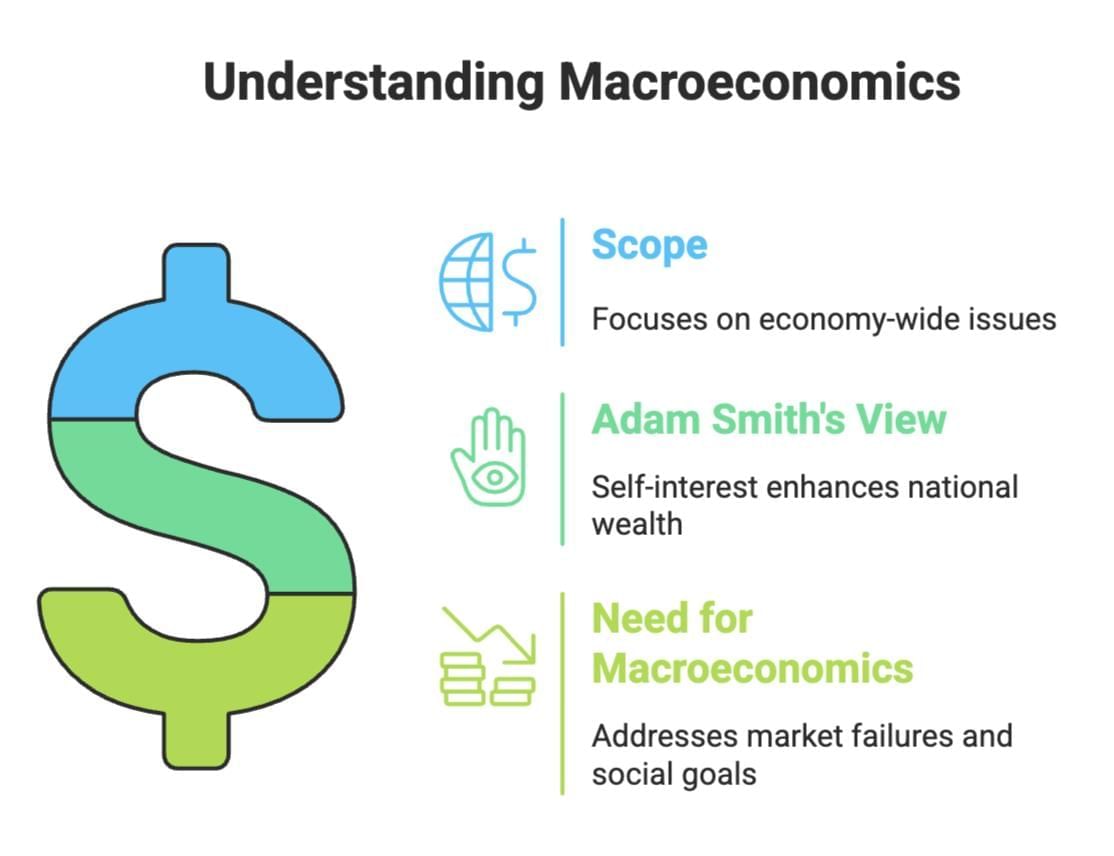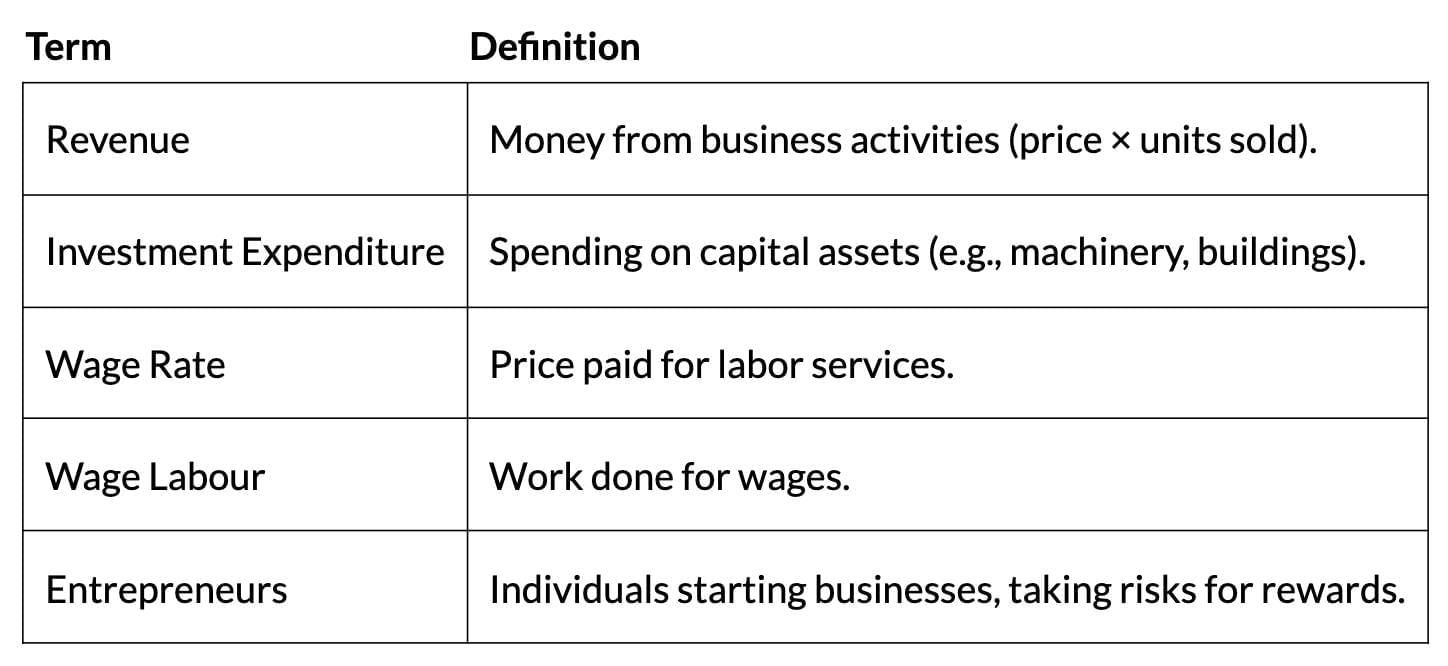Cheat Sheet: Introduction to Macroeconomics | Economics Class 12 - Commerce PDF Download
Macroeconomics, derived from the Greek word ‘makro’ meaning “large,” studies aggregate economic factors like total income, spending, and production. Popularised by John Maynard Keynes’ 1936 book The General Theory of Employment, Interest and Money, it examines policies for full employment and economic growth.
Economic Agents
Definition: Individuals or groups making economic decisions.
Types:- Producers/service providers: Decide what/how much to produce.
- Governments, corporations, banks: Set spending, interest rates, taxes.
Macroeconomics Overview

Scope: Addresses economy-wide issues, unlike microeconomics, which focuses on individual markets.
Adam Smith’s View: Self-interested actions of buyers/sellers enhance national wealth without a separate aggregate focus.
Need for Macroeconomics:- Addresses market failures and non-existent markets (e.g., supply-demand imbalances result in market failure, the market for clean air doesn't exist).
- Social goals (employment, education, health) require modifying aggregate outcomes.
Key Areas of Macroeconomics

Relationship with Microeconomics
- Connection: Rooted in microeconomic demand/supply forces but focuses on their aggregate effects.
- Policy Role: Modifies market forces to achieve societal goals beyond market outcomes.
Macroeconomics in Developing Countries
Goals in India:- Reduce unemployment.
- Improve education and healthcare access.
- Ensure effective administration.
- Adequate defence provision.
Characteristics of Macroeconomic Decision-Makers
- Entities: State or statutory bodies (e.g., RBI, SEBI).
- Objectives: Public goals defined by law/Constitution, prioritising national welfare over private profit.
- Role: Direct resources to public needs, differing from individual agents’ profit motives.
Emergence of Macroeconomics
- Key Event: John Maynard Keynes’ The General Theory of Employment, Interest and Money (1936).
- Pre-Keynes: Classical tradition assumed full employment and capacity utilisation.
- Great Depression (1929):
- Low demand, idle factories, job losses.
- USA: Unemployment rose from 3% (1929) to 25% (1933); output fell around 33%.
- Keynes’ Contribution: Theorised long-lasting unemployment, analysed economy-wide interdependence, birthing macroeconomics.

Capitalist Economy
Definition: Production by private businesses, driven by profit in a free-market (laissez-faire) system with minimal government role (law and order only).
Key Features:- Private property, no government interference, profit motive.
- Freedom of enterprise/ownership, flexible labour markets.
- Consumer choice, price control by the market.
Examples: Hong Kong, Singapore, Canada, UAE, Ireland.

Important Terms

Four Main Sectors of the Economy

Conclusion
Macroeconomics, rooted in Keynes’ response to the Great Depression, provides a framework to analyse aggregate economic activity. By studying sectors, policies, and agents, it guides efforts to achieve full employment, sustainable growth, and societal welfare, harmonising economic forces like a symphony.
|
64 videos|308 docs|51 tests
|
FAQs on Cheat Sheet: Introduction to Macroeconomics - Economics Class 12 - Commerce
| 1. What are the key areas of macroeconomics and their significance in understanding the economy? |  |
| 2. How does macroeconomics relate to microeconomics? |  |
| 3. What are the characteristics of macroeconomic decision-makers in developing countries? |  |
| 4. What historical factors contributed to the emergence of macroeconomics as a distinct field? |  |
| 5. What are the four main sectors of the economy, and how do they interact? |  |
















